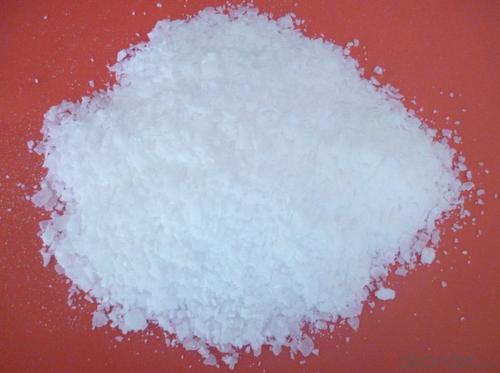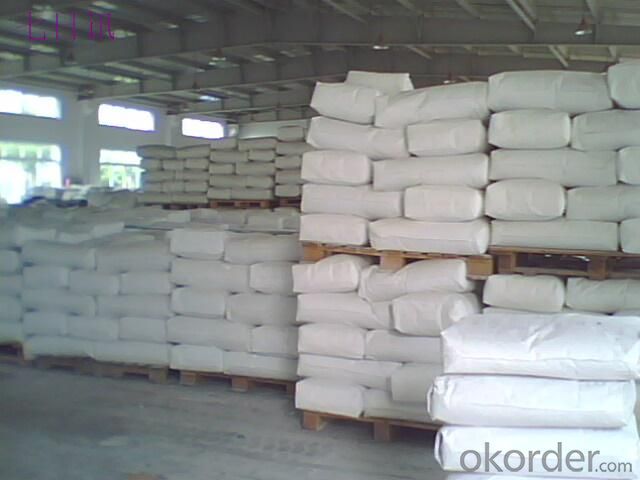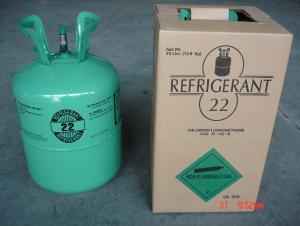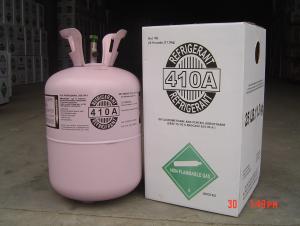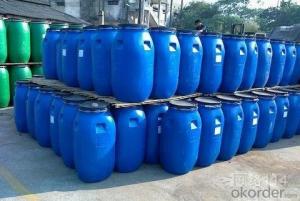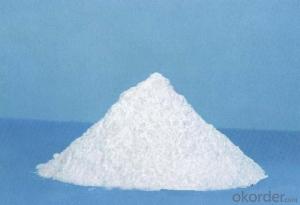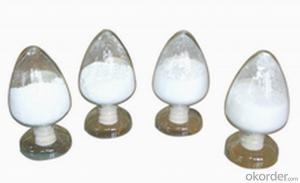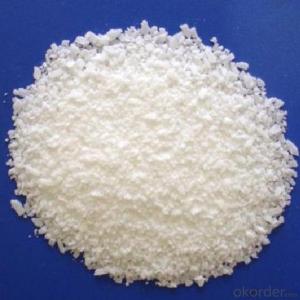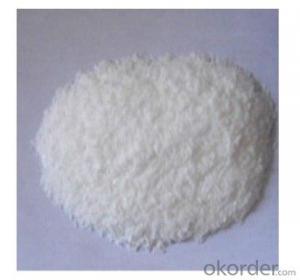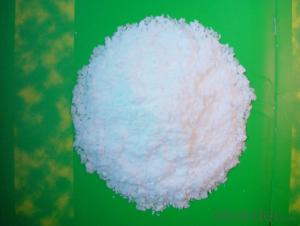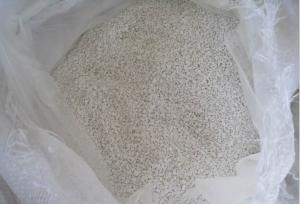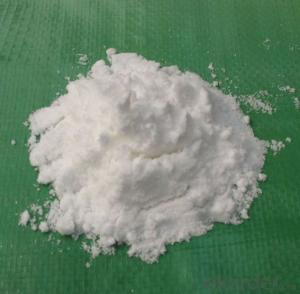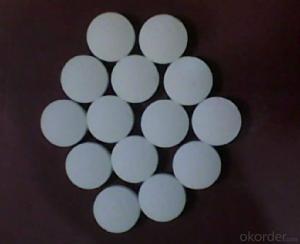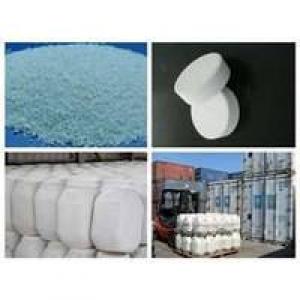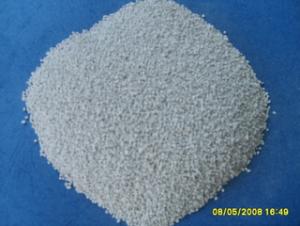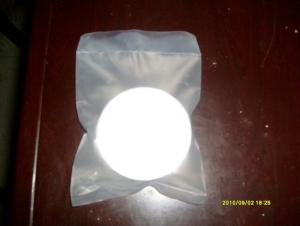Stearic Acid 1860
- Loading Port:
- Tianjin
- Payment Terms:
- TT OR LC
- Min Order Qty:
- -
- Supply Capability:
- 8000MT/month m.t./month
OKorder Service Pledge
OKorder Financial Service
You Might Also Like
Stearic acid
Formula: C18H36O2
Structural Formula:CH3(CH2)16COOH
Product Description:
Shaped like Lump, flake; Saturated fatty acid mainly with C16 and C18, white flake solid at ambient temperature, not dissolved in water, slightly dissolved in benzene and carbon bisulfide, and easily dissolved in hot alcohol. No smell no poison. It has the general chemical properties of organic carboxylic acid.
Physicochemical Properties:
pure product is white with a shiny soft small pieces, melting point 69.6 degrees, the boiling point of 376.1 degrees. Relative density 0.9408, refractive index 1.4299, slowly volatile in the 90-100 degrees. Slightly soluble in cold water, soluble in alcohol, acetone, soluble in benzene, chloroform, ethyl ether, carbon tetrachloride, carbon disulfide, toluene and so on.
Specification:
Item | Index | |||||
Grade No. | 1842 | 1838 | 1820 | 1860 | 1870 | 1880 |
Iodine value gI2/100g ≤ | ≤5.0 | ≤5.0 | ≤5.0 | ≤6.0 | ≤7.0 | ≤8.0 |
Saponification value mgKOH/g | 206~211 | 206-213 | 214-216 | 193-220 | 193-220 | 192-218 |
Acid value mgKOH/g | 208~210 | 210~211.5 | 214-225 | 182-218 | 192-218 | 193-220 |
Chroma (Hazen) ≤ | ≤60 | ≤80 | ≤100 | 200-400 | ≤150 | 400 |
Freezing point °C | 54~57 | 54~57 | 55~57 | 54 | 52 | 52 |
Moisture % ≤ | ≤0.2 | ≤0.2 | ≤0.2 | ≤0.3 | ≤0.3 | ≤0.3 |
Inorganic acid % ≤ | 0.001 | 0.001 | 0.001 | 0.001 | 0.001 | 0.001 |
Suggest Uses:
Mainly for the production of stearic acid salts: Widely used system for cosmetics, plastic cold-resistant plasticizer, release agent, stabilizer, surfactants, rubber vulcanization accelerator, waterproof agent, polishing agent, metal soap, metal mineral flotation agent, softeners, pharmaceuticals, and other organic chemicals.
In addition, oil-soluble pigments can be used as solvents, crayons transfer slip agent, waxed paper lighting agent, stearic acid glyceride emulsifier, etc..
Packing :25/50kg in PP bag ,25MT/20GP
Product Storage:
in dry warehouse ventilation should be more than 10mm from the ground to avoid damp products in the above-mentioned conditions, from the date of delivery for one year shelf life.
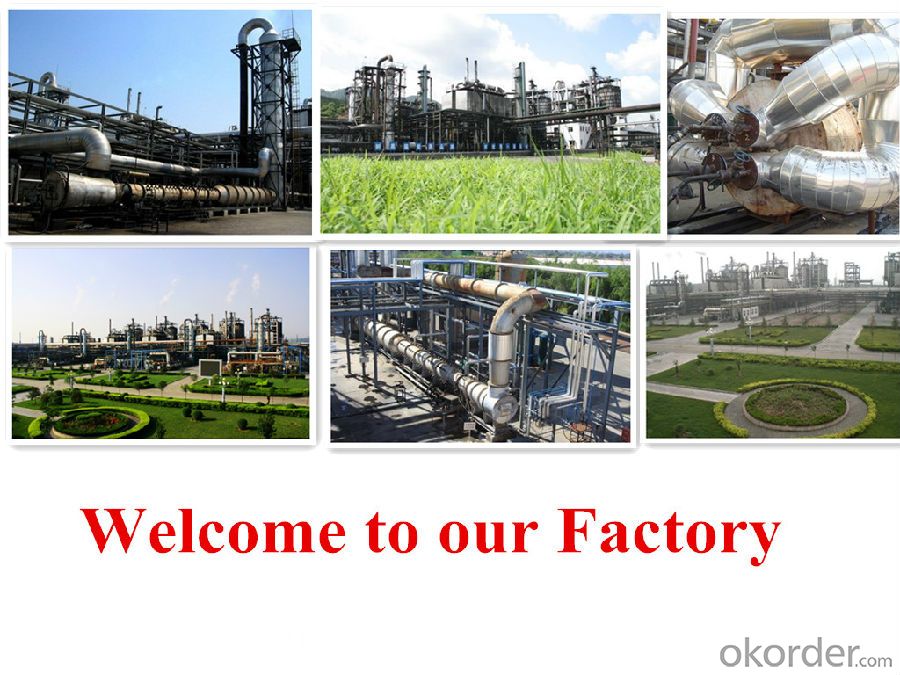

- Q: What is the difference between an aromatic compound and a hydrocarbon derivative?
- The aromatic compound is a benzene ring containing compound, which may be a hydrocarbon or a hydrocarbon derivative. Hydrocarbons are hydrocarbon-containing compounds, and hydrocarbons containing hydrocarbons other than hydrocarbons are derivatives of hydrocarbons. The two concepts have crossed.
- Q: Is carbon monoxide an organic gas?
- The organic compound contains carbon, hydrogen, oxygen, nitrogen and other elements, a few also contain sulfur, phosphorus, halogen, etc. Any kind of organic compounds, its molecular composition contains carbon, the vast majority also contains hydrogen Elements. Since the hydrogen atoms of the organic compound molecules can be replaced by other atoms or radicals, resulting in a lot of other organic compounds, so modern people generally believe that hydrocarbons and their derivatives known as organic compounds, referred to as organic matter.
- Q: What are the most stable carboxylic acid derivatives?
- In addition to acid halide are more stable, which ester and amide stability is stronger
- Q: What is organic matter?
- Organic compounds (organic compounds) mainly by the oxygen elements, hydrogen, carbon elements. Organic matter is the material basis for life. Fat, amino acids, protein, sugar, heme, chlorophyll, enzymes, hormones and so on. Biological metabolism and biological genetic phenomena, are related to the transformation of organic compounds. In addition, many substances closely related to human life, such as oil, natural gas, cotton, dyes, chemical fiber, natural and synthetic drugs, are organic compounds.
- Q: Sugar, fat, and so on a variety of organic matter is full of different units of the heat of the small box. (Save the heat the most efficient, the least loss of heat the most practical and most economical box).
- Inorganic matter with carbon after, as if with their own ideas, began to build their own. So slowly evolved into a complex organic matter
- Q: Hydrocarbons and hydrocarbon derivatives are not all non-electrolytes
- Hydrocarbons are, derivatives are not necessarily, such as organic acids (formic acid, acetic acid, etc.)
- Q: Is the heterocyclic compound not a derivative of cyclic hydrocarbons? why?
- The heterocyclic compound is an organic compound containing a heterocyclic structure in its molecule. The atoms that make up the ring contain at least one heteroatom in addition to carbon atoms. The heteroatoms include oxygen, sulfur, nitrogen and the like. Theoretically, the heterocyclic compound can be regarded as a derivative of benzene, that is, one or more CH in the benzene ring is replaced by a heteroatom. The heterocyclic compound may be in parallel with the benzene ring to form a fused ring heterocyclic compound.
- Q: What is the aromatic hydrocarbon .. what is the derivative of the aromatic hydrocarbon
- Aromatic hydrocarbons referred to as "aromatic hydrocarbons", refers to the molecule containing benzene ring structure of the hydrocarbons. Is a closed chain.
- Q: Organic chemistry, naming of derivatives containing oxygen (hetero) atomic bridged cyclic hydrocarbons
- A little bit of a way to draw out with chemdraw, then convert structure to name
- Q: The nature and use of cellulose derivatives
- The basic rules of esterification and etherification of cellulose In the cellulose molecule, the position of the three hydroxyl groups in the glucose group is different, and the influence of the adjacent substituents and the spatial blocking effect are different. The relative acidity and dissociation of the three hydroxyl groups are: C> C> C When the etherification reaction is carried out in the alkaline medium, the C hydroxyl group first reacts, then the C hydroxyl group, and finally the C primary hydroxyl group. In the acidic medium for esterification reaction, the reaction of the hydroxyl reaction is difficult and etherification reaction in the opposite order. When reacted with a larger amount of substituted reagents, the spatial hindrance has an important effect, and the space hindering the smaller C hydroxyl groups is easier to react than C and C hydroxyl groups.
Send your message to us
Stearic Acid 1860
- Loading Port:
- Tianjin
- Payment Terms:
- TT OR LC
- Min Order Qty:
- -
- Supply Capability:
- 8000MT/month m.t./month
OKorder Service Pledge
OKorder Financial Service
Similar products
Hot products
Hot Searches
Related keywords


